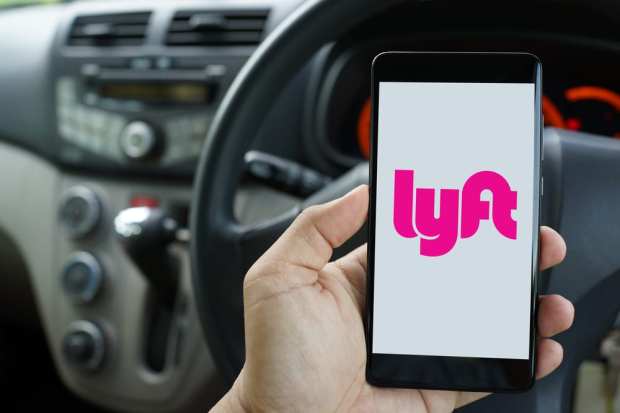Lyft Discounts Trips To Grocery Stores

Grocery stores are undergoing historic transformation thanks to digital technology, transforming from rather staid operations to places that feature the latest retail and delivery innovations. That’s all fine and dandy, assuming consumers are within easy reach of those grocery stores.
But now, the digital economy is trying to reach those consumers as well — in this instance, via ridesharing provider Lyft, which is fresh off its initial public offering and struggling to keep pace with the investor excitement around Uber and its march toward its own (bigger) IPO.
Going by federal and other estimates, some 23.5 million people in the U.S. live in what are commonly called food deserts.
Those urban and rural areas, usually impoverished, are defined as locations a mile or more away from supermarkets — which can constitute a significant hurdle for consumers without access to vehicles or reliable public transit. Not all cities have reliable mass transit in all areas, including low-income parts of the city that lack access to supermarkets. Chicago stands as a prime example of that, but it’s not the only one.
Lyft Program
Enter Lyft and its new Grocery Access Program, which is currently being piloted in Washington, D.C. In a PYMNTS interview on Thursday (April 25), Michael Masserman, Lyft’s head of global policy and social impact, discussed the purpose of the program and what comes next.
“There is a significant barrier for access to healthy food,” he said, adding that it’s not just a problem in urban areas (where relatively high-priced convenience stores often serve as a substitute for supermarkets in food deserts, though without the full range of fresh and healthy foods). In rural areas, some 2.3 million people live more than 10 miles from the nearest supermarket.
The recently launched Washington, D.C. pilot shows how the Lyft program works in general. Lyft teamed up with nonprofit Martha’s Table to launch the Grocery Access Program. The ridesharing company will provide discounted rides to and from the supermarket for families living in two of the city’s neighborhoods. So far, Lyft is paying for those discounts, but Masserman did not rule out the use of grants if and when the Grocery Access Program expands. “We are looking at more partners, and more options for the future,” he told PYMNTS.
Word is getting out about the program via media, the nonprofits that are or will be involved and word of mouth.
Lyft recently launched the Grocery Access Program in Atlanta, and has plans for further expansion to such cities as Atlantic City, Baltimore, Chicago, Columbus, Detroit, Indianapolis, Los Angeles and Miami. So far, it is too early for hard metrics or solid best practices from the effort, according to Masserman, but personal feedback from participants has been positive.
Ridesharing Concerns
This is hardly the first time ridesharing services have been put on the front line of socioeconomic issues. Among the biggest topics for the ridesharing economy is whether it ultimately helps or hurts low-income and minority communities — and whether the likes of Lyft and Uber hurt or help the overall concept and goals of urban mass transit.
A study released less than a year ago suggests that, contrary to much opinion and even recent experience, the ever expanding ridesharing industry is doing a good job of serving those communities. That’s even as earlier studies have shown that Uber and Lyft tend to focus on higher-income areas. That newest study, a dissertation from the UCLA Institute for Transportation Studies did, indeed, find that many ridesharing customers hail from “wealthier neighborhoods,” according to a summary.
But that study, which focused on LA County, found that neighborhoods with the lowest rate of vehicle ownership — those areas with the highest concentrations of minority populations — tend to have the most ridesharing pick-ups and drop-offs. The findings were based on an analysis of 6.3 million Lyft rides that took place in fall 2016.
That’s hardly meant to suggest that low-income and minority consumers face no hassles when it comes to ordering Lyft, Uber or other ridesharing services.
Via, another ridesharing service, in 2018 faced accusations that it discriminated against such consumers by refusing to service certain neighborhoods in Washington, D.C. The company reportedly had been violating local non-discrimination laws by “by excluding two of the District’s predominantly black neighborhoods from its coverage area.” The company denied those charges, saying its plan was to service the densest areas of the city with its rides, in part as a response to ongoing maintenance problems with the local subway, with service expansions coming later.
The development of the ridesharing economy still has a ways to go, and not only via the impacts of the Lyft and Uber IPOs. Those companies serve consumers from a variety of different backgrounds and income levels, and there will almost certainly be more moves designed to better serve particular consumer segments.
